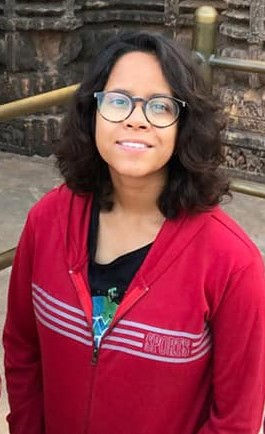The Uncanny Story
- Ukiyoto

- May 23, 2019
- 4 min read
Updated: May 28, 2019
Stories!
It is amusing to witness the importance of stories in the lives of mortals. Stories, as a child, is told to you to be a source of delightment, a source of entertainment.
Stories - they are told to you to be the pathway to your dreams. Do you remember Cinderella? As a child, I remember forcing my mother to read and re-read the story to me time and again. Do you remember Gingerbread Man? The pleasure which the mirth of a bread of a bread gave me was unimaginable! I have aged since then. I have also realised that reality is much harsher. The tell-tales were still not lost, they persisted, but with less glee and exuberance. As I aged, some other stories began to allure me. They were a tad bit different from the fairy tales though.
One was the story of an artist. Each year, the dusty grounds of the cosmopolitan would decoy artists who would accumulate there, from the fringes of the heartland, to tell their story. He narrated to me the story of his brother, the farmer. His art was simple; self- explanatory; but like the truth, it was bitter. On the precisely moulded grief- stricken face of the farmer, there persisted two gloomy, despondent dark stripes. Either sides of his face reflected his misery. The abundance and deficit of the resource most important to him, water, had led him to those stripes; had led him to his own demise. His misery had led him to his freedom.

Another was the story of a young woman. She told me the story of photographs. They were a reminder of the past. She told me about the stacks at her home. Each one recited a mighty ballad. Looking at the photographs, she would recall how her father’s eye had glimmered in the dusk, how his laughter had echoed in the hall, how his tender shoulders had always sturdily supported her. The photographs of her father were reminiscent of joy and delight, of endearment and devotion. Those photographs were her sanctuary, her safe haven. There were some other photographs. A peek at those photographs would distort her soul and shred her spirit. There were some photographs of her procreator. Looking at those photographs, she would recall how her caress had lulled her, how her smile had spread warmth in their hearts, how her damp eyes had shattered her father’s heart. Looking at the photographs, she would recall how the sound of choking had deafened her ears, how the sight of peace had agonised her entire being, how the cracked ceiling had still not been mended. Photographs. They were a beastly thing. They reminded her of her past.

Religiosity had always boggled my mind. I had grown up in a family which valued faith but had no regard for blind belief. My mind had always been curious about the constituents of faith, of blind belief, of the confines between the two, of the unearthly and of the spectacular. To soothe my wandering mind, I had decided to visit the abode of the unearthly. I was greeted by a sea of devotees. I sat among them, I sat to quench my thirst. A woman, adorned by grey and furrows of wrinkles, sat next to me. The hymns and verses were devoted to her memory. At the end of the recital, she narrated to me a story. The story of her thirst. She had no sorrows in life apart from one. She longed to summon the divine. She was a woman and that was her only folly. Civilisation had conspired against her, had throttled her dignity and divinity. Civilisation had nourished and nurtured the patriarch to devalue her consent and had disciplined the patriarch to ridicule supremacy, to ignore her cries at the time of baring her body. She grieved. Civilisation had not even spared its creator.
Stories!
There were numerous. Some hid behind the plaintive eye, some rejoiced in the delighted smile. Some ignited spirit in the idler, some cowered the feared. But each nurtured a world of their own, each persisted in the spiral of life. Each of them were infinite, each of their relativity endured eternally.
The story revolves around several themes. The first theme attempts to capture the problems faced by farmers in India. Agriculture serves as the primary occupation for around 50% of the Indian population. The present resource- intensive model of development has built- in ecological destruction and economic deprivation. The present model of development has increased the incidences of droughts and floods which has resulted into crop failures. As per the reports of the National Crimes Record Bureau (2010) in India, forty five (45) farmers commit suicide each day. The second theme reflects the despair faced by a child upon her mother’s death. Each photograph explores a wide expanse of memories. Memories serve as a reminder of the good and the ugly, of joy and of pain, of the surpassed doom and of the renaissance of the soul. And the last theme revolves around the discrimination meted out to women. Irrespective of the religion, holiness has always been attributed to the man. Women have been branded unholy and have been denied the opportunity to mediate between man and divinity. Patriarchy has not only enabled men to summon the divine but has also facilitated them to devalue consent and to disrespect the opposite sex.
About the Author

Sampurna Sarkar is a socio - economic researcher who passed out from Tata Institute of Social Sciences, India in 2019. Her course curriculum along with the exposure she gained through her stay in villages exposed her to different social realities. Also, the visible inequalities existing between different persons instigated her to learn more about such phenomena.
Related Articles, Insight Into the World of Trans Families
Comment and Like the post above to share your views and interact with the Author!




谷歌seo推广 游戏出海seo,引流,快排,蜘蛛池租售;
Fortune Tiger Fortune Tiger;
Fortune Tiger Fortune Tiger;
Fortune Tiger Fortune Tiger;
Fortune Tiger Fortune Tiger;
Fortune Tiger Slots Fortune Tiger Slots;
Many escort agencies strive to offer a high level of customer service. This includes attentive and responsive communication, as well as addressing any concerns or requests clients may have. By prioritizing customer service, escort agencies aim to create a positive and satisfying experience for their clients. This dedication to service helps naples fl escorts build long-term relationships and ensures repeat business.
Gender identity is a deeply held sense of being male, female, a blend of both, or neither. It may or may not align with the sex assigned at birth. Understanding gender identity is crucial for supporting individuals in expressing their true selves. It involves recognizing and respecting each person's self-identified gender, which can greatly influence allknight.com their mental health and overall quality of life.
I love to read my kids stories and I remember my parents telling me stories as we went through photo albums. We don't have many photo albums anymore.
Stories are really relevant in our lives. They give lessons and also inspirations on how we lead our lives and prepare for the future.